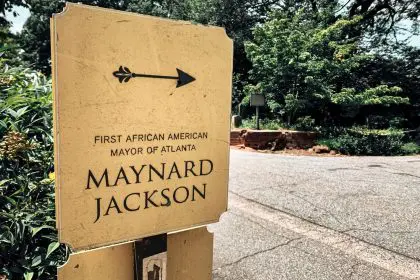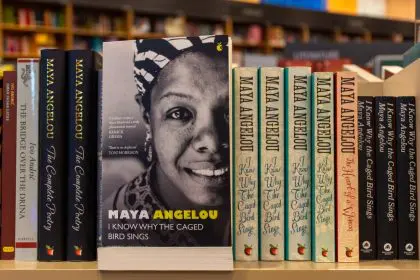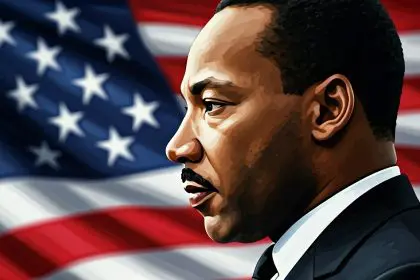The roots of documenting Black history trace back to 1926 when historian Carter Woodson established Negro History Week. This initiative later expanded into Black History Month in 1976, aiming to reshape America’s understanding of African American contributions beyond celebrating individual achievements. Woodson recognized the critical need to document and preserve the complete African American experience, understanding that historical narratives often excluded crucial aspects of Black life and culture.
This foundational work opened doors for broader historical documentation, though many stories remained untold. The evolution of historical recording methods has since expanded to include innovative approaches that capture previously overlooked narratives. These methods have become increasingly important as communities work to preserve their histories for future generations.
Mapping as a resistance strategy
African American communities have long wielded cartography as a powerful instrument for documenting injustice and survival strategies. The creation of the Living Black Atlas stands as a testament to this legacy, showcasing generations of Black mapmaking that previous historical records often neglected. This comprehensive digital archive demonstrates how communities used geographical documentation to challenge systemic oppression and preserve their cultural heritage.
Traditional cartography frequently failed to represent the true experiences of Black communities, particularly during periods of significant urban transformation. The construction of interstate highways, for instance, displaced thousands of Black residents from established neighborhoods, a demographic shift that conventional maps rarely acknowledged. These urban renewal projects of the 1950s and 1960s devastated countless Black communities across America, destroying businesses, separating families, and disrupting established social networks.
Civil rights era documentation
The strategic use of mapping gained particular prominence during the civil rights movement. The Student Nonviolent Coordinating Committee employed detailed cartographic analysis to expose systemic inequalities across the American South, creating visual evidence of income and education disparities. These maps became crucial tools for organizing protests and directing resources to areas of greatest need.
The NAACP’s anti-lynching campaign of the early 20th century demonstrated the persuasive power of geographical documentation. By mapping incidents of racial violence, the organization effectively illustrated the pervasive nature of racial terror, compelling broader American society to confront these atrocities. This mapping strategy proved instrumental in building support for anti-lynching legislation and raising awareness about racial violence across the nation.
Modern mapping initiatives
Contemporary projects have expanded upon these historical foundations, employing digital tools to create more comprehensive representations of Black experiences. The Folded Map Project, created by artist-activist Tonika Lewis Johnson, exemplifies this evolution, connecting addresses across Chicago’s racial divide to highlight persistent inequalities. This innovative approach brings together residents from different neighborhoods to foster dialogue and understanding about urban segregation patterns.
The Chicago Black Social Culture Map, developed by the Honey Pot Performance collective, represents another significant advancement in cultural documentation. This digital platform chronicles Black Chicagoans’ experiences from the Great Migration through the emergence of electronic dance music, weaving together historical records with artistic expressions. The project preserves important cultural landmarks, social gatherings, and artistic movements that shaped the city’s Black community.
Impact on community restoration
These mapping initiatives serve a deeper purpose beyond geographical representation, functioning as tools for community healing and identity reclamation. By documenting cultural expressions, family histories, and political movements, these projects help restore a sense of place and belonging for Black communities. The preservation of these stories challenges historical erasure and provides evidence of long-standing community presence and contributions.
Digital cartography provides opportunities for communities to preserve their stories for future generations. These platforms create accessible archives that connect current residents with their neighborhood’s historical significance while highlighting the ongoing impact of past policies on present-day communities. The digital format allows for continuous updates and additions, ensuring that contemporary experiences become part of the historical record.
Educational value and historical preservation
Modern mapping projects serve as valuable educational resources, helping students and researchers understand the complex relationships between geography, race, and social justice. These tools illuminate patterns of segregation, discrimination, and resistance that have shaped American cities. By making these histories accessible through interactive digital platforms, mapping initiatives engage new generations in understanding their community’s past.
The work of documenting Black history through cartography continues to evolve with technological advancements. Contemporary mapping projects incorporate multimedia elements, oral histories, and community-contributed content to create rich, multifaceted representations of Black life and culture. These initiatives demonstrate the ongoing importance of preserving and sharing African American experiences through innovative methods.
Future implications and continued development
The transformation of mapping from a simple directional tool to a medium for social justice reflects the broader evolution of historical documentation. As technology advances, new opportunities emerge for capturing and sharing community histories. These developments enable more nuanced and comprehensive representations of Black experiences across America.
The impact of these mapping initiatives extends beyond historical documentation, influencing urban planning, policy decisions, and community organizing efforts. By providing concrete evidence of historical patterns and their contemporary consequences, these projects contribute to ongoing discussions about racial equity and social justice in American cities.
The continued development of mapping projects ensures that future generations will have access to more complete and accurate representations of Black history and culture. These initiatives carry forward Carter Woodson’s vision of comprehensive historical documentation while employing modern tools to capture and preserve the diverse narratives within the African American experience.
















